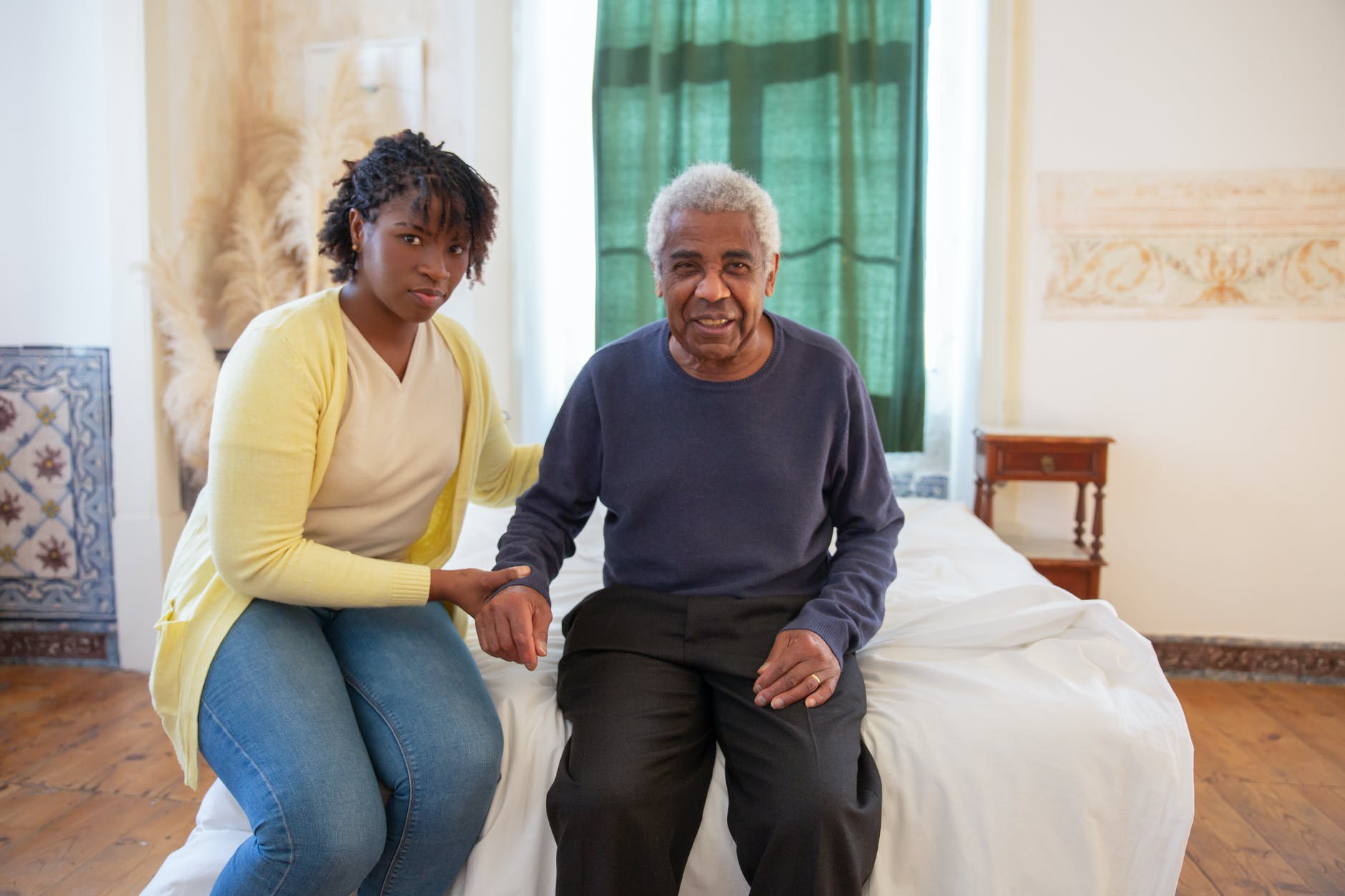Guide to Therapeutic Communication: 17 Core Techniques for Nurses to Provide Better Patient Care and Improve Results

Effective nursing care is built on therapeutic communication, a vital skill for all nurses and aspiring healthcare professionals, regardless of their position or level of expertise.
Nurses are the health providers who spend the most time with patients. From the moment a patient enters the hospital, nurses are present every step of the way, through all procedures and treatment plans, and up to their discharge. They provide care, attention, relief, information, and empathy.
That is why we will explore the topic of therapeutic communication in nursing, examining what it is, its benefits, and why all nurses should strive to develop this skill.
We will also share essential therapeutic communication techniques to help nurses provide excellent and efficient care to their patients.

What Is Therapeutic Communication in Nursing?
Therapeutic communication is the purposeful, interpersonal communication in healthcare that focuses on improving a patient’s physical and emotional well-being. Therapeutic communication also involves the conscious employment of techniques to help patients better understand their condition or situation and to encourage them to freely express their ideas and feelings in a relationship of mutual respect and acceptance.
What Are Therapeutic Communication Techniques?
Therapeutic communication techniques are conscious methods of establishing, maintaining, and developing a rapport between the patient and nurse, utilizing both verbal and nonverbal cues.
Therapeutic communication techniques are essential for all nurses, whether they are aspiring learners, new to the profession, or experienced practitioners. Additionally, therapeutic communication remains just as crucial for remote workers, such as telehealth nurses, home health nurses, and ER nurses, as it is for bedside and frontline professionals.
What Is the Purpose of Therapeutic Communication?
The primary goal of therapeutic communication is to help patients navigate the emotional and psychological stress arising from experiencing a medical condition. It also serves a purpose in presenting both to the patients and their support network the relevant details of the former’s condition and treatment. Lastly, therapeutic communication is a two-way lane, with the techniques providing an avenue for patients to express the physical or mental states they are experiencing to nursing professionals.
Origins of Therapeutic Communication
The concept of therapeutic communication is by no means a new one. Its benefits have been acknowledged for centuries. In the late 1800s, Florence Nightingale was one of the first to emphasize the importance of communication that develops between nurses and patients. In more recent times, multiple studies have corroborated the importance of the practice.
Read more about the legacy of Florence Nightingale in our Nurses Week article.

17 Essential Therapeutic Communication Techniques
Nurses employ a wide range of approaches to engage in therapeutic communication. Below, you’ll find a list of the most essential therapeutic communication techniques, as well as examples and different scenarios on how to employ them:
1. Engage in Active Listening
Listening actively involves paying close attention to what the patient is saying, including their words, gestures, facial expressions, and other nonverbal cues of body language. You should sit facing the patient, lean slightly towards them, have an open posture, and make eye contact. It’s also helpful to provide nonverbal feedback. A slight nod or smile can make the patient feel heard and understood.
2. Share Your Observations
As a nurse, you should be mindful of your patient’s actions, mood, or looks, as sometimes these can give you clues about their condition, how well they’re responding to treatment, and so on. For instance, if you see a patient looking more tired than usual or if you notice them skipping meals, you can share these observations with them.
3. Show Empathy
Putting yourself in someone else’s shoes and trying to understand and accept their feelings and reality is an essential skill for a nurse. An example of therapeutic communication using empathy might be: “I understand how difficult this must be. We’ll try to get to the bottom of this and do everything we can to have you up and running again soon.”
4. Use Humor When Appropriate
Sometimes, it’s helpful for patients to forget, even for a brief second, about the condition, the pain, or the diagnosis that brings them to the hospital. A little bit of humor used appropriately can bring about positive emotions and establish a good relationship between nurse and patient. Laughter catalyzes feelings of togetherness, closeness, and friendliness.
5. Encourage Patients to Share Their Feelings
Another therapeutic communication technique nurses can use is encouraging patients to express their feelings and emotions. RNs should create a safe space where patients can express their feelings or frustrations. Nurses can guide patients through healthier ways to manage anger and pain, and effective communication plays a significant role.
6. Give Your Patients the Chance to Speak
Therapeutic communication is as much about knowing when to stay silent as it is about learning when and what to speak. A good nurse will know when to give the patient time to work through their emotions, process information, or observe what is happening in their environment. In most cases, it should be the patient who breaks the silence.
7. Comfort Patients Using Touch
Touch is the most potent form of therapeutic communication. Comforting gestures, such as holding the hand of a patient who is experiencing a severe illness, can help them feel a sense of peace or optimism when they need it most.

8. Provide Continuous Information
An essential part of a nurse’s job description involves educating and informing patients and their families. But there’s a difference between “I need to do an electrocardiogram because you have tachycardia” and “I have to get you an electrocardiogram, which is a painless test that uses sensor patches that I attach to your chest to see the timing and duration of your heartbeats. We have to do the test because the heart rate monitors show you have tachycardia.”
9. Clarify the Details of Treatments
The clarification process in nursing therapeutic communication can be approached in two distinct ways. Either the nurse isn’t sure or is unclear about something the patient says. Hence, she kindly asks the patient to clarify the ambiguous statement, or the nurse provides some information to the patient that the receiver doesn’t completely understand. For instance, if the patient isn’t sure what “tachycardia” means, the RN can further clarify: “It just means that your heart rate is elevated and your heart is beating too fast.” On the other hand, if the patient says, “I feel worse than I did this morning,” the nurse would have to clarify how their symptoms changed and what exactly the patient means by “feeling worse.”
10. Ask Relevant Questions
Decision-making is an integral part of a nurse’s job. To make informed decisions that lead to optimal patient outcomes, RNs must gather relevant and comprehensive information. Some tips in this direction would be to not overwhelm the patient with too many questions at once. Ask one question at a time and ensure you thoroughly explore each topic before moving on to the next.
11. Summarize
The patient will generally find it helpful to receive a summary of nursing interactions and procedures. All the most critical information in an easy-to-digest, remember, and follow format.
12. Learn How to Confront Patients (When Needed)
This particular therapeutic communication technique requires a great deal of skill and sensitivity, as you don’t want to appear offensive or attacking. However, patients may exhibit inconsistencies in their attitudes or behaviors in certain situations. For instance, they might refuse a course of treatment to which they had previously agreed. In those moments, if you have established trust with the patient, you can delicately confront them about their choices.
13. Focus the Conversation on What Is Important
Sometimes, the patient may go off-topic and try to tell you their entire life story when your initial question was about the symptoms they’re experiencing. Respectfully, it would be best if you steered the conversation back into focus. Another way to employ this technique of therapeutic communication is when a patient mentions, in passing, a detail that you find relevant. Then, you can zoom in on that detail and focus the conversation on what you find suitable from a nursing perspective. For example, suppose a patient passively mentions they feel some pain. In that case, you may think it relevant to focus on this detail and ask, “On a scale from 1 to 10, how bad is the pain you’re experiencing?”
14. Adopt an Exploratory Approach
Exploring is essentially a method of asking follow-up questions without giving the patient the impression that you’re probing. When a patient gives you vague or ambiguous answers or when you want to obtain more specific or in-depth information, that’s when you should consider an exploratory approach. At the same time, ensure the patient isn’t uncomfortable during the process.
15. Paraphrase in Order to Clarify
This therapeutic communication technique involves paraphrasing what the patient has said and attempting to express it in your own words. It’s an excellent way to clarify the meaning of your patient’s words. It might be helpful to ask the patient if you understood their initial statement correctly and if your paraphrasing accurately reflects it.
16. Restate for Certainty
Although restating is also a clarification technique, it differs slightly from paraphrasing. When attention to detail is of utmost importance, you may need to resort to this nursing therapeutic approach, which involves repeating back to the patient what they have said to you. Asking, “Did I summarize what you said correctly?” is an efficient way to conclude this method.
17. Use Probes or Leads
Sometimes, when interacting with a patient, you may need to obtain specific information. Specific, open-ended questions, also known as probes or leads, can be a productive way to gather the details required to provide the best possible care to your patients.

Benefits of Employing Therapeutic Communication
According to the definition, therapeutic communication aims to advance the physical and emotional well-being of a patient. This is one of the fundamental benefits of this type of interaction: it contributes to the healing process.
Among other characteristics of therapeutic nursing communication, others worthy of mention are:
- More accuracy in diagnoses – Establishing a clear line of communication with patients improves the accuracy of diagnoses through continuous consultation.
- Increased collaboration in decision-making – Instead of a one-sided approach to treatment, therapeutic communication techniques allow for the collaborative development of patient care plans.
- Better adherence to treatment – Therapeutic communication enhances patient trust not only in nursing personnel but also in the care plans and treatments administered, as it incorporates their feedback.
- Improved patient outcomes – The compound effect of these techniques is the overall increase in patient outcomes and clinical results.
- Reduced risk of malpractice – Patient-centered encounters informed by therapeutic communication have demonstrated a reduction in the incidence of errors in the fields of nursing and healthcare.
- Decreased levels of nurse burnout – A better relationship between patients and nurses, as well as a lower risk of mistakes, leads to reductions in professional stress felt by healthcare professionals.
- Improved patient and nurse satisfaction – Although therapeutic communication is primarily patient-centered, it also benefits nurses, enhancing their satisfaction in both the treated communities and the nursing profession as a whole.
Therapeutic communication makes the difference between basic nursing care and quality nursing care. While every nurse has to communicate with patients, RNs who employ therapeutic communication techniques will provide education and support to patients while also being objective and empathetic.
Example of the Benefits of Therapeutic Communication
Suppose a nurse has to draw blood from a patient. Standard communication would require the nurse to describe the procedure briefly and then move on. However, in the same scenario with therapeutic communication, the nurse would take the time to discuss the patient's concerns, reluctance, or worries. They would explain the procedure while also ensuring that the patient is heard, their emotions are validated, and their viewpoints are respected.
The respectful and compassionate nature of therapeutic communication helps patients open up more about their needs, including their physical, mental, and emotional well-being. It also encourages them to share their experiences with the treatments, potential side effects, and other related information.

5 Tips for Developing Therapeutic Communication Skills
Utilizing these types of therapeutic communication in everyday practice requires mastering some skills. In this section, we’ll explore the skills needed to excel at therapeutic communication:
1. Start Paying Attention to Body Language
Sometimes body language reveals as much, if not more, than verbal communication. The patient could be in extreme pain but too proud to admit it. They could come in complaining about pain in their arm, but careful examination of their body language can point you in the direction of some underlying issue. You can pick up on these slight clues if you pay attention to body cues.
2. Start Making Time for Every Patient
Nurses are busy and must juggle many tasks, often to the point of becoming overworked and disillusioned with their job. It may be tempting to take shortcuts in practice, but quality therapeutic communication requires more time than basic care. But it pays off. To form meaningful relationships with your patients, gain their trust, and provide more effective care, you must dedicate time and be fully present whenever you enter a patient’s room. Making time is part of what makes you a great nurse.
If you feel like you don’t have enough time and are stressed and overwhelmed, you may be experiencing nursing burnout. Learn more about how you can avoid and combat burnout.
3. Exercise the Encouragement of Communication
Communication is always a two-way street. Your patients need to know that you'll listen actively to their concerns; they should feel safe discussing their problems with you, knowing that you’ll respect their beliefs and wishes.
4. Start Focusing on the Patient
Therapeutic communication involves interactions between a nurse and a patient, during which the nurse focuses on the patient’s needs, emotions, and feelings. Thus, it’s essential to keep the patient at the center of the experience. Try not to multitask when you’re engaging with a patient. Do your best to understand and empathize with the patient’s experience.
5. Practice Using Open-Ended Questions
Open-ended questions are your friend. They invite more detailed answers and encourage the patient to give more information about their emotions and behaviors. They are often associated with developing trust, seeming less threatening, and stimulating free responses. Of course, open-ended questions alone won’t accomplish the task. That’s why nurses skilled in therapeutic communication know when to ask closed or open-ended questions to gather the correct information and build a better rapport with the patient.
6. Use Your Own Experiences to Build a Relationship
In the process of caring for patients, dedicating yourself, your time, your empathy, and perhaps offering a personal anecdote or story from your own experience can make a tremendous difference. All of these little details can make the patient feel better. If they’re lonely, you can offer to stay for lunch; if they’re bored, you can bring their favorite movie; if they’re stressed, you can talk with them until their mood improves. In any of these situations, you show that you are also human, not only a nurse, and that’s why offering self is one of the most potent forms of therapeutic communication.
Mastering all these techniques of therapeutic communication is not the only way for you to improve your nursing skills. Find more tips on how to be a better nurse and reach your full potential in nursing practice.

How Not to Communicate with Patients: The 5 Don’ts in Therapeutic Communication
There are some approaches to interacting with patients that can lead to miscommunication or a breakdown of the patient-nurse relationship. Non-therapeutic techniques can be seen as barriers to the communication of feelings and ideas. Below, we outline the main don’ts in therapeutic communication and guide how to avoid them in daily practice.
1. Don’t Change the Subject
Abruptly and callously changing the subject may show a lack of empathy on your side and discourage the patient from engaging in conversation with you. Instead of saying, “Your insurance is not important now; it’s time for your lunch,” you could try “First, have some lunch, and then we can talk about what’s going on with your insurance.”
2. Don’t Be Defensive
Patients may not always exhibit agreeability and satisfaction with your activities. They may complain, criticize, or point out faults, whether real or perceived. In case you encounter this type of behaviour, don’t get defensive. Listen attentively and try to identify the root cause of their dissatisfaction. In most cases, the underlying issues will go much deeper than simply being a few minutes late for the scheduled walk.
3. Don’t Give Fake Assurances
Sometimes false reassurances like “Everything will be alright” or “You’ll be fine” stem from a good place. All you want is to be kind and help the patient feel a little better. But the result won’t always be the anticipated one. The patient may feel discouraged from expressing their feelings further when they are met with such comments, or they may end up having false hope. Either way, more harm than good is done, so try to avoid giving false reassurances.
4. Don’t Be Judgemental Toward Your Patients
The relationship between nurse and patient should always be non-judgmental, open, and honest. Bringing your judgments into your conversation, either positive or negative, is not a therapeutic way of interacting with patients.
5. Don’t Engage in Stereotyping
Stereotyping is one of the most hurtful things you can do as a nurse. It is a barrier to efficient communication. Even more so, it prevents you from nurturing interpersonal relationships with your patients.
Are You Ready to Employ Therapeutic Communication Techniques in Your Nursing Practice?
Nursing care is a cornerstone of efficient healthcare. In its turn, therapeutic communication is central to nursing practice. That’s why all nurses should strive to be as proficient in therapeutically engaging with their patients as they are in clinical skills. Everyone stands to win as a result.
Whether you are a nurse aiming to improve your practice or an aspiring learner trying to understand how to be the best nurse in the future, knowing the essential therapeutic communication techniques, as well as the don’ts of therapeutic communication, can make a considerable difference.
The best way to become acquainted with the ins and outs of therapeutic communication and practice it effectively is to do so in a structured environment, during your educational process. That is why the academic programs at Nightingale College place considerable importance on concept-based instruction, research-based practical experiences, and instilling in our learners the skills and knowledge applicable within future professional settings.
And, because we recognize that the only way to adopt a proactive approach to communication is by encouraging it as early as possible, we maintain an active focus on making the learner experience at Nightingale College as collaborative as possible. The resources and services you can access ensure a continuous line of communication between you, other learners, and the teaching faculty, thereby improving the quality of education and fostering a sense of community in the field – something you can discover by reading the testimonials of our alumni.
Learn more about the academic programs at Nightingale College and improve your nursing education!
Therapeutic Communication FAQs
What Is Therapeutic Communication in Nursing?
According to specialty literature, therapeutic communication is defined as an exchange between the patient and the nurse or any other healthcare provider, utilizing both verbal and non-verbal methods.
What Is the Main Purpose of Therapeutic Communication?
The ultimate goal of therapeutic communication is to help patients overcome some of the emotional and psychological distress associated with medical conditions and healthcare provision.
However, the style also offers other benefits, both for patients and nurses, including improved patient outcomes, reduced malpractice events, increased accuracy in diagnoses, enhanced effectiveness of treatment plans, increased patient satisfaction, and decreased levels of nursing burnout and stress.
Why Is Therapeutic Communication Important in Nursing?
Therapeutic communication is essential in nursing because it builds trust, enhances patient safety, and improves health outcomes. When communicating empathetically, with clarity, and purpose, nurses generate and uphold a space where their patients feel heard, respected, and supported.
What Are The Three Main Purposes of Therapeutic Communication?
The three primary purposes of therapeutic communication are:
- Providing education to patients
- Providing support to patients
- Establishing a relationship in which patients feel free to express their concerns
What Are The Five Characteristics of Therapeutic Communication?
Therapeutic communication, along with the techniques associated with it, possesses five central characteristics: empathy, respect, genuineness, concreteness, and confrontation. All the methods, as well as the style of communication recommended to nurses, follow these principles.
What Are Therapeutic Communication Techniques?
Therapeutic communication techniques are concrete methods that nurses consciously employ when interacting with patients, their families, and caregivers to properly inform them about their condition and care plans, provide support throughout treatment, and establish a pleasant and empathetic environment.
What Are Some Therapeutic Communication Techniques I Should Consider?
There are 17 primary therapeutic communication techniques that nurses employ on a regular basis. Below, you can find the quick presentation of the list:
- Active listening
- Sharing of observations
- Showing empathy
- Using humor
- Encouragement to share feelings
- Using Silence
- Using touch
- Continuous information sharing
- Clarification
- Asking relevant questions
- Summarizing
- Confrontation
- Focusing the conversation
- Exploring
- Paraphrasing
- Restating
- Providing leads
What Skills Are Essential for Successfully Performing Therapeutic Communication?
The primary skills and abilities necessary for effective therapeutic communication include active listening, empathy, attention to body language, dedicating sufficient time to each patient, a proactive attitude toward communication, focusing on the patient, and employing effective questioning techniques.
What Are the Barriers to Multicultural Therapeutic Communication?
Differences in cultural norms and practices may hinder communication between nurses and patients from historically underserved and underrepresented populations. Additionally, some unrecommended communication styles, such as judgmental attitudes or reliance on stereotypes, can also limit the outcomes of patient-nurse communication, leading to poor patient outcomes. Finally, the lack of inclusivity and representation in the field of nursing is often cited as a persistent barrier to effective communication and patient care for individuals from diverse backgrounds.
Recognizing the importance of inclusivity and access to nursing education, particularly among learners from historically underrepresented and underserved communities, we strive to offer academic programs that accommodate diverse lifestyles and obligations while delivering top-quality education. Our support for our learners from all walks of life also comes in the form of services, resources, and scholarships.
Learn more about the learner experience at Nightingale College and enroll in your academic program of choice!

